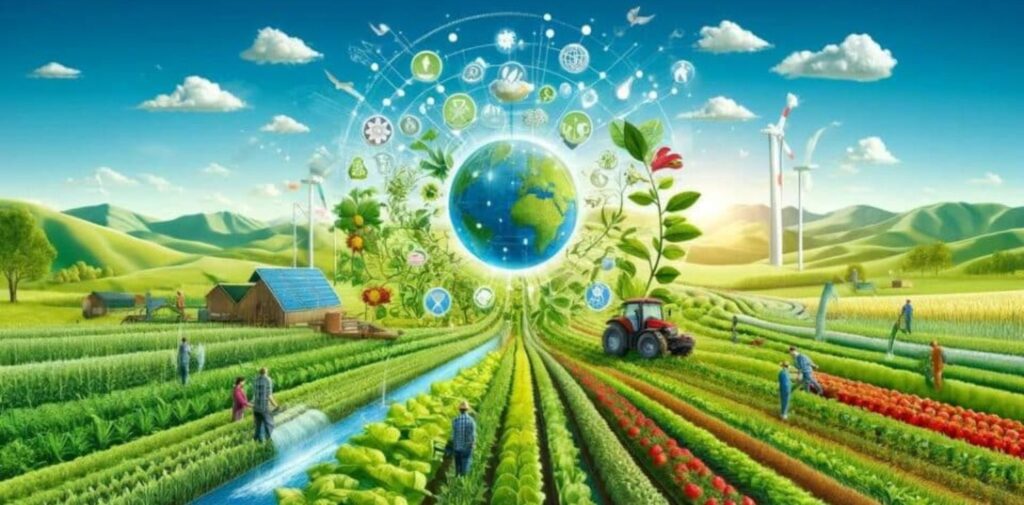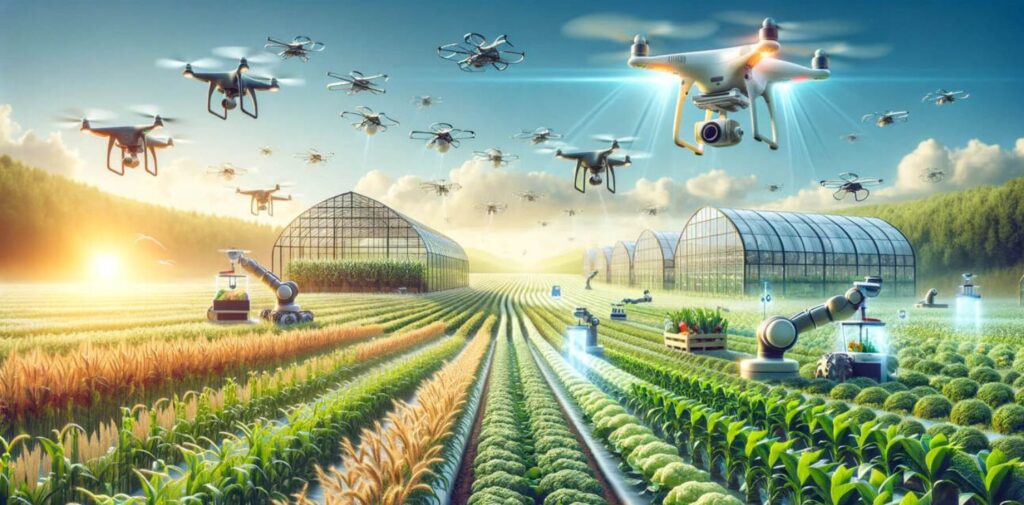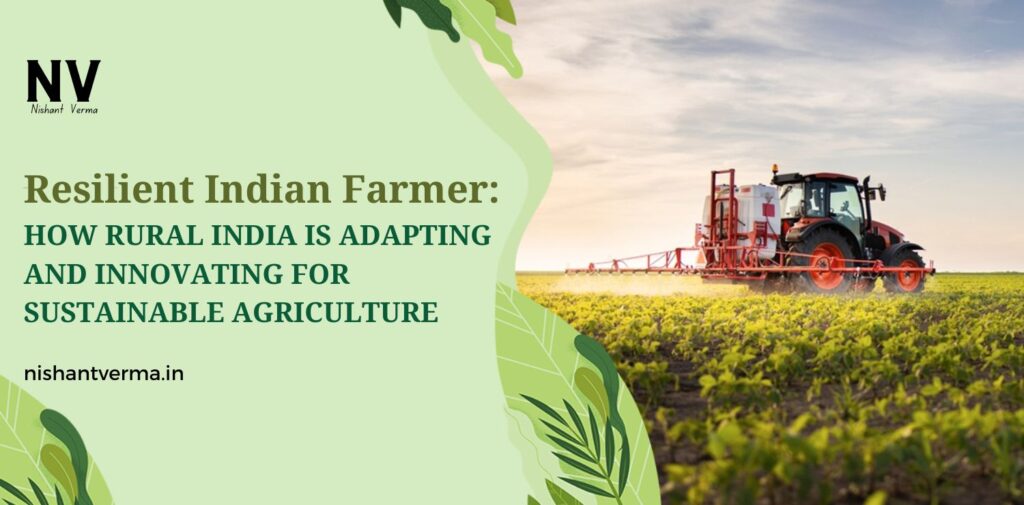India, a land known for its ancient traditions and vibrant culture, has always been deeply connected to agriculture. For centuries, farming has been the backbone of rural India, supporting the livelihoods of millions of farmers. These farmers are not just growing food but are also shaping the future of India’s agriculture through innovation, resilience, and adaptability. Despite the many challenges they face, from unpredictable weather patterns to limited resources, Indian farmers are proving that they are capable of not just surviving but thriving through sustainable practices that ensure food security and environmental preservation.
In this article, we will explore the inspiring story of the resilient Indian farmer, how rural India is adapting to changes, and the innovative methods that are making Indian agriculture more sustainable than ever before.
Challenges Faced by Indian Farmers
India’s farmers face a unique set of challenges that make their job incredibly difficult. The country’s agriculture is largely dependent on the monsoon season, and when the rains fail or arrive unpredictably, it directly impacts crop production. Farmers often face severe droughts or floods, both of which can destroy entire crops, leaving them in financial distress.
Moreover, many farmers rely on traditional farming techniques, which can be inefficient and unsustainable in the long run. Soil degradation, water scarcity, and the use of harmful chemicals have posed serious threats to both the environment and the farmers themselves. Adding to this, access to modern technology, quality seeds, and credit remains a challenge for many farmers, particularly in remote rural areas.
Despite these challenges, Indian farmers have shown immense resilience, adapting to changing circumstances, and using their resourcefulness to innovate in order to sustain their agricultural practices.

Sustainable Agriculture: The Key to Resilience
The concept of sustainable agriculture has gained tremendous importance in recent years. This approach focuses on farming methods that not only preserve the environment but also increase the long-term productivity of the land. Indian farmers are increasingly turning to these methods to cope with challenges like climate change, rising input costs, and diminishing natural resources.
One of the ways farmers are making agriculture more sustainable is by adopting organic farming practices. Organic farming avoids the use of harmful chemical pesticides and fertilizers, which can degrade the soil and water. Instead, farmers rely on natural alternatives such as compost, crop rotation, and intercropping to improve soil fertility and control pests. Organic farming is not only better for the environment, but it also produces healthier food.
Farmers in states like Sikkim, Himachal Pradesh, and Kerala have embraced organic farming with great success. Sikkim became the first fully organic state in India, with farmers adopting sustainable practices across the state. This has not only improved soil health but also led to a rise in demand for organic produce, opening up new markets for local farmers.
Water Conservation: Innovating for Sustainability
Water is a critical resource for agriculture, but water scarcity is one of the most pressing issues facing farmers in India. In many regions, groundwater levels are depleting, and traditional irrigation methods, such as flood irrigation, waste large amounts of water. To address this issue, Indian farmers are increasingly adopting water-saving technologies and efficient irrigation practices.
One such innovation is drip irrigation, a method that delivers water directly to the plant roots, reducing water wastage and improving crop yield. Drip irrigation has been particularly beneficial in water-scarce areas like Rajasthan, Gujarat, and Maharashtra, where farmers have adopted this technique to conserve water and grow crops more efficiently.
Another important method being adopted is rainwater harvesting. Farmers are creating systems to collect and store rainwater, which can then be used during dry spells. This has been particularly helpful in regions where the monsoon is erratic or where there is a shortage of water resources.
The government and NGOs have also played a significant role in promoting these water conservation techniques. With support from various schemes, farmers are being encouraged to use modern irrigation systems that not only conserve water but also help in improving crop yields, making farming more profitable in the long run.

Embracing Technology: Digital Tools for the Modern Farmer
In recent years, technology has become a powerful tool for Indian farmers. While many still rely on traditional methods, there is a growing trend of farmers using digital tools and mobile apps to improve their farming practices. These technologies help farmers make better decisions about irrigation, pest control, and crop management.
One of the most popular innovations is the use of weather forecasting apps. These apps help farmers keep track of weather patterns and make informed decisions about planting and harvesting crops. They can also receive alerts about potential natural disasters like floods or droughts, allowing them to take preventive measures.
Moreover, mobile platforms like Agri-tech startups have emerged to provide farmers with crucial information about market prices, crop health, and government schemes. For example, KisanHub and AgroStar are platforms where farmers can receive advice on agricultural practices, buy quality seeds, and even access financial services. These tools have helped bridge the information gap that many rural farmers face, empowering them to make informed choices.
Additionally, drones and satellite technology are being used in agriculture to monitor crop health, detect pest infestations, and even assess soil quality. These technologies help farmers increase productivity while reducing their dependency on manual labor and chemical inputs.
Climate-Resilient Crops: Research and Innovation
India’s farmers are also adopting new, climate-resilient crops that can withstand extreme weather conditions like droughts or floods. Drought-resistant varieties of rice, wheat, and pulses are being developed through research by institutions like the Indian Council of Agricultural Research (ICAR). These crops require less water and can survive in regions with erratic rainfall.
In addition to genetically modified crops, farmers are also adopting traditional varieties of crops that have been cultivated for centuries. These crops are often more resistant to local pests and diseases and are better suited to the local environment. For example, the millet crop, once considered a traditional crop, is being reintroduced as a climate-resilient crop that requires less water and grows well in harsh conditions.
Farmers in regions like Tamil Nadu and Andhra Pradesh are experimenting with these new and old varieties of crops, showing how innovation and tradition can work together to create a more sustainable future for agriculture.

Role of Government and NGOs in Supporting Farmers
The Indian government has been actively supporting farmers in adopting sustainable agricultural practices. Initiatives like Pradhan Mantri Krishi Sinchayee Yojana (PMKSY) aim to improve irrigation facilities, while schemes like Soil Health Management and National Mission on Sustainable Agriculture provide financial assistance to farmers who want to adopt environmentally friendly practices.
In addition, various non-governmental organizations (NGOs) have been working on the ground to help farmers embrace sustainable agriculture. These NGOs provide training and resources to farmers, helping them adopt new technologies and farming methods that improve productivity while protecting the environment.
For example, the Barefoot College in Rajasthan has been training women farmers to use solar energy for irrigation, demonstrating how sustainable practices can be both eco-friendly and economically beneficial.
Conclusion: Resilient Indian Farmer
Despite the challenges that Indian farmers face, their resilience and ability to adapt are nothing short of inspiring. The shift towards sustainable agriculture, water conservation, technological innovation, and climate-resilient crops are all signs of a bright future for Indian farming. As rural India embraces these changes, farmers are becoming not just food producers, but also environmental stewards and technological pioneers.
The Indian farmer is no longer just a symbol of struggle but of strength, hope, and progress. With the right support from the government, NGOs, and the private sector, the future of Indian agriculture looks promising. The resilient Indian farmer is not just feeding the nation but is also building a more sustainable and prosperous future for generations to come.
In a world where environmental challenges are growing, India’s farmers are proving that with determination, innovation, and sustainability, it is possible to overcome any obstacle and thrive. They are the true heroes of rural India, and their story of resilience is one that will continue to inspire for years to come.




